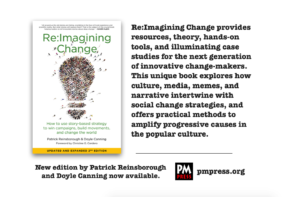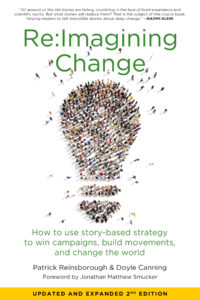Networks are Powerful
How do we scale our campaigns without having to create cumbersome structures? How do we get a wide range of people embedded in local organizing to be meaningfully connected to like minded people and organizations in different places? In a word: Networks.
Networks are such an omnipresent part of 21st century life that it’s easy to take them for granted but they have long been critical infrastructure of social movements. Changes in technology and culture have made them even more important as they increasingly out-compete traditional hierarchical and centralized institutions, as has been documented through the research into “New Power.” This 2014 HBR article is a good place to start which contrasts the underlying values between what it defines as old power versus new power.

Distributed vs Decentralized
You are probably already organizing via networks so it’s worth taking a moment to distill some of the core concepts. A key distinction is between distributed and decentralized networks. Sometimes people use these two terms interchangeably and that can obscure useful distinctions.
Distributed Networks have a center that is playing a specific role to support the network. They usually are networks that have some kind of centralized resources and network curators with ongoing commitment. They have proved to be a powerful and effective structure that has been at the core of a number of winning campaigns.
The “Directed network campaign model” is among the most sophisticated applications. Check out the original work on this in the 2016 Networked Change report.
One potential downside though is that whereas they often create campaign-valuable activity, distributed networks don’t always translate into real local power-building. Without specific attention to longer-term goals there is risk of local organizing being more ephemeral rather than the kind of deeper community organizing that transcends campaign-specific outcomes. It can also be hard for distributed networks to pivot from one campaign to another unless the network is built around a broad enough theory of change.
Decentralized networks are made up of people and organizations who are all aligned enough to be taking coordinated local actions but nobody is in charge, although sometimes the flow of money is the placeholder for governance. A common version of this is the “call to action” where someone produces the initial call and everyone self-organizes however they see fit.
For decentralized approaches to lead to long-term impact it usually requires more involved governance frameworks to co-develop strategy and action plans.
“Translocal alliances” are among the most sophisticated decentralized models. In some cases they have built ongoing committed federations between aligned place-based organizing efforts. For a great example of this check out the Climate Justice Alliance and their Our Power Communities.

What defines “leadership” in a network? Traits to cultivate in local leaders
A key strategy in national organizing is identifying high-level local/regional leaders. Here’s some basic leadership qualities to look for, and more importantly, to be cultivating in the representatives of local groups you are supporting.
- Relevant skills: Leadership capacity is a broad, multifaceted area and the specific skills needed might be things like public speaking, emotional intelligence, organizing, group facilitation, strategy development, fundraising, the ability to inspire and model etc.
- Organizing Orientation: leaders must focus on developing the organization via recruitment, retention, capacity-building and developing new leaders.
- Commitment: little can happen without the dedication necessary to follow through, even when progress is slow and the opposition is fierce.
- Clarity: the ability to explain the “big why” of the movement to recruit, inspire, and motivate people. Clarity builds power.
- Organizing Orientation: leaders must focus on developing organization via growth, capacity-building and developing new leaders.
- Connectivity: Where and how a person is already situated in a community or region can be a critical component of their leadership. Movements are relational and good leaders not only build lots of relationships they prioritize maintaining them.
- Accountability: I think of this fundamentally as accountability to mission but it also pertains to the willingness to be in ongoing relationship across difference, take feedback and learn from mistakes.
- Identities: Sometimes depending on the type of network and campaign it is necessary for people with specific identities to provide leadership and political direction. This could be specific racial or cultural identities such as BIPOC, Indigenous, Palestinian/Jewish or might be more related to the issue like coal miner, small business owner, union member etc.

Patrick’s Random list of Best Practices for Groups
This is mainly a criteria for doing capacity-assessment of local groups within an existing network. Often times it can be formalized into some sort of grading system that allows national organizers to tailor their support to the existing strengthens and weakness of the groups in question:
- Governance/Decision-making process: Is the group run effectively so that it can make decisions, hold itself accountable and implement the plans it makes?
- Organizing approach: Is the group committed to building a base of support? Do they have recruiting/orientation/onboard infrastructure? Are they developing leaders? Do they have an organizing-based approach or theory of change?
- Strategic orientation/campaigning capacity: How effective are they at designing and implementing strategy? Is the group running its own campaigns? Does it win them?
- Multiracial theory of change/cultural competency: How diverse is both the leadership and the base of the group? Do they utilize best practices for antiracism and multiracial organizing?
- Financial management: Does the group have the appropriate level of resources and budgetary oversight to align with their scale and vision?
- Absorption capacity: Not always relevant but depending on the type of network it is helpful to know which groups could potentially scale up quickly to meet the need of a movement moment and/or turn external resources into on-the-ground impact by rapidly increasing their profile, membership, staffing etc.
Some Techniques for Strengthening & Aligning Networks
The goal of successful network organizing is to have a group of aligned leaders (some organizing traditions would say “cadre”) who can create ambitious plans and hold one another accountable on their progress to meeting them. So how do we we strengthen the network and make sure everyone is aligning their efforts?
- The single most powerful thing a network can do to increase its impact is to develop a shared strategy including evaluation processes and clear benchmarks for assessing progress towards the agreed upon goals.
- Creating ongoing “communities of practice” is one way to support peer-learning.
- Fellowship programs can be a way to resource specific people to experiment and innovate.
- Coaching: providing direct support to build the capacity of local leaders can help the network be more useful to participants as well as increase collective impact.
- The fossil fuel divestment movement offered “escalation coaches” that were available to help local campaigns go to that stage of the campaign. This worked because they had already popularized a shared campaign model which included escalation as an inevitable step.

Hopefully some of these definitions and different tips will prove useful to anyone who is either in a network or designing network organizing strategies.
And in case it, useful here is a link to a stand-alone google doc (minus the pictures) of this blog post.







